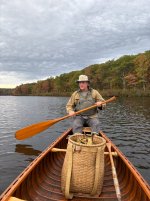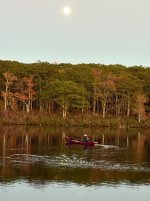In regards to the venerable Maine Guide paddle, I am quite a fan of the aesthetics but understand the performance concerns of many more efficiency minded paddlers. There are certainly lighter, faster and more efficient designs out there these days. Guide work is at least one part appearance, (adhering to traditional aesthetics, sentimentality and folk wisdoms) and several parts performance (being able to prepare and deliver an experience to the attending audience) from what I've gathered in casual interactions. This paddle style is at least a part of the adherence to tradition I think.
Many so called guide paddles are not a lot of fun to put to use in my own experience. One of the worst offenders by far was a Shaw and Tenney Maine Guide I found at an antique store. The blade was heavy and thick, the shaft oversized and the grip designed similarly. I've seen some with 10" wide and 30"+ long blades that swing like a ball and chain rather than a well balanced tool for maneuvering a canoe. However within this design niche I have found several examples that defy expectations. Specifically paddles made by a man named Ray Porter.
He was a world war 2 veteran, bush pilot, guide and wood worker. For many years Porter's wood working made many of the paddles sold by Old Town back in the day. What I have found with these paddles is that they are refined and thinned in ways that many other guide paddles are not.
The blade and shaft are carefully balanced, he seemed to only pick the straightest grained boards and thinned his paddles to the practical limits of the materials and their eventual use by knowledgeable canoeists. These are not heavy sticks to bear against the rocks but works of practical art by comparison to some examples. I spent a lot of time handling them but didn't have the privilege of paddling a canoe with one. The paddle grip flexes slightly under a load and springs back readily, the blade is wide and thin allowing quiet and smooth in water recovery and the tip is slightly; not dramatically thicker at the end
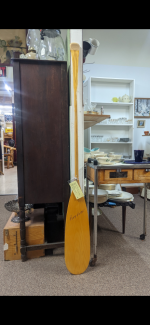
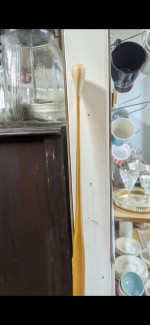
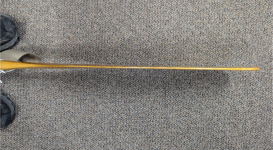
I did not end up buying any of these paddles when I saw them come up for sale and do regret it a bit in retrospect. However I have been greatly inspired by their form and hope to remember the qualities that made these so special when I go to create my own paddles.
This particular specimen is 60 in long with a 7" wide blade. The balance is right where the shaft begins to transfer the throat, it doesn't favor left or right in the water and cuts quietly through during in water recovery. Not my first pick for whitewater, or pushing off of rocks but a good all round cruiser. The edges of the blade taper to about 3/32" and the very tip is around 1/4". My woodworking skills are amateur at best so my lines were not as accurate as would be required to thin this paddle out more. A far cry from Porter's work but the same principles are on display in this creation I like to think.


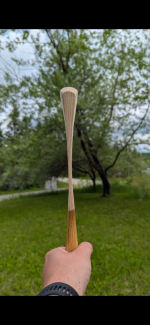


Here are some other examples I believe came from Porter's.
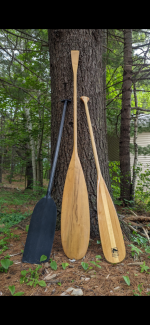
Last but not least a 73" maple behemoth with no maker's mark. It is only slightly blade heavy which is remarkable being that it has a 8 1/4" x 30 blade, the edges are around 3/32". It's too long to use under most circumstances, but I'm sure would make a great steering paddle for a war canoe.


